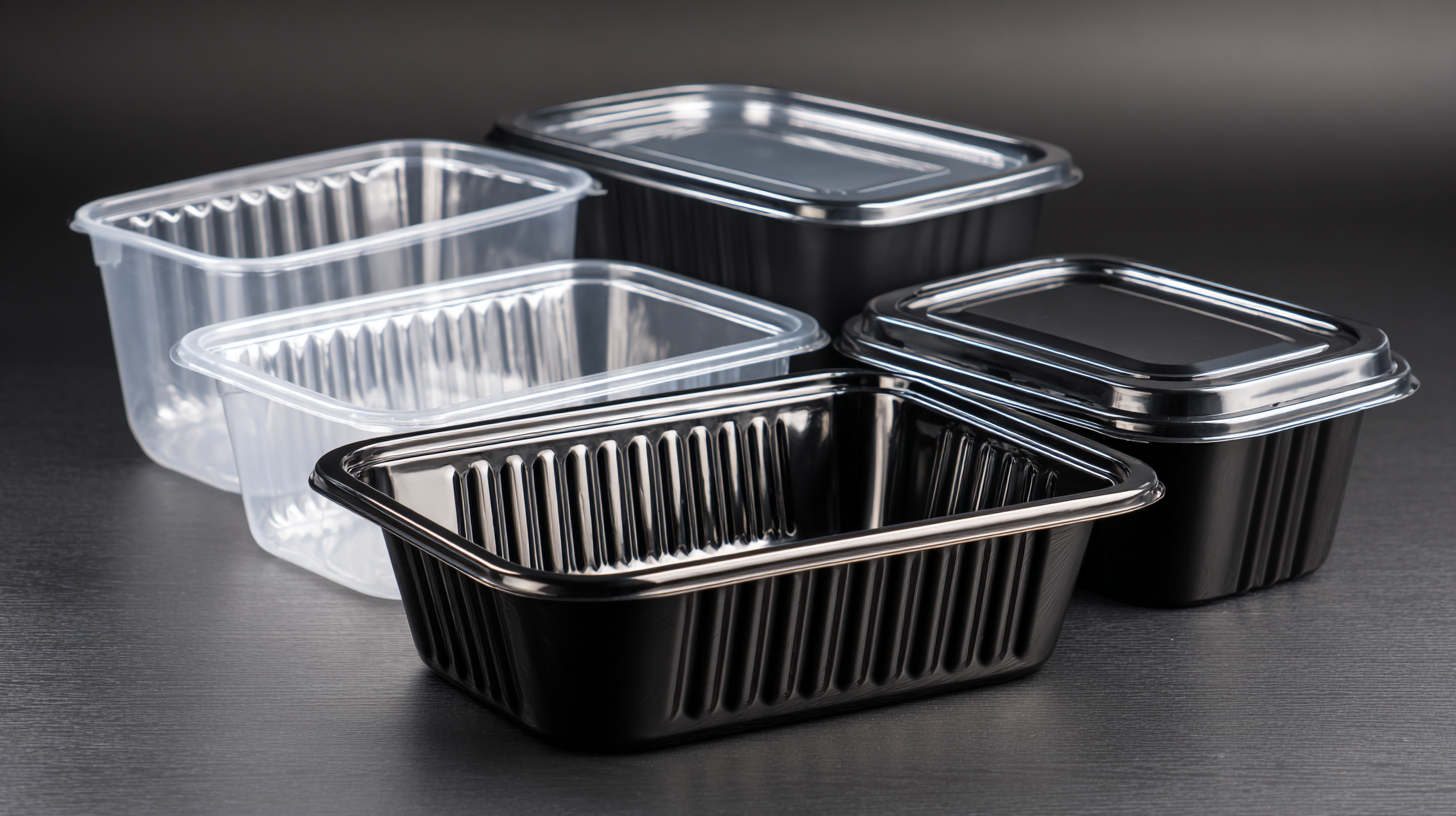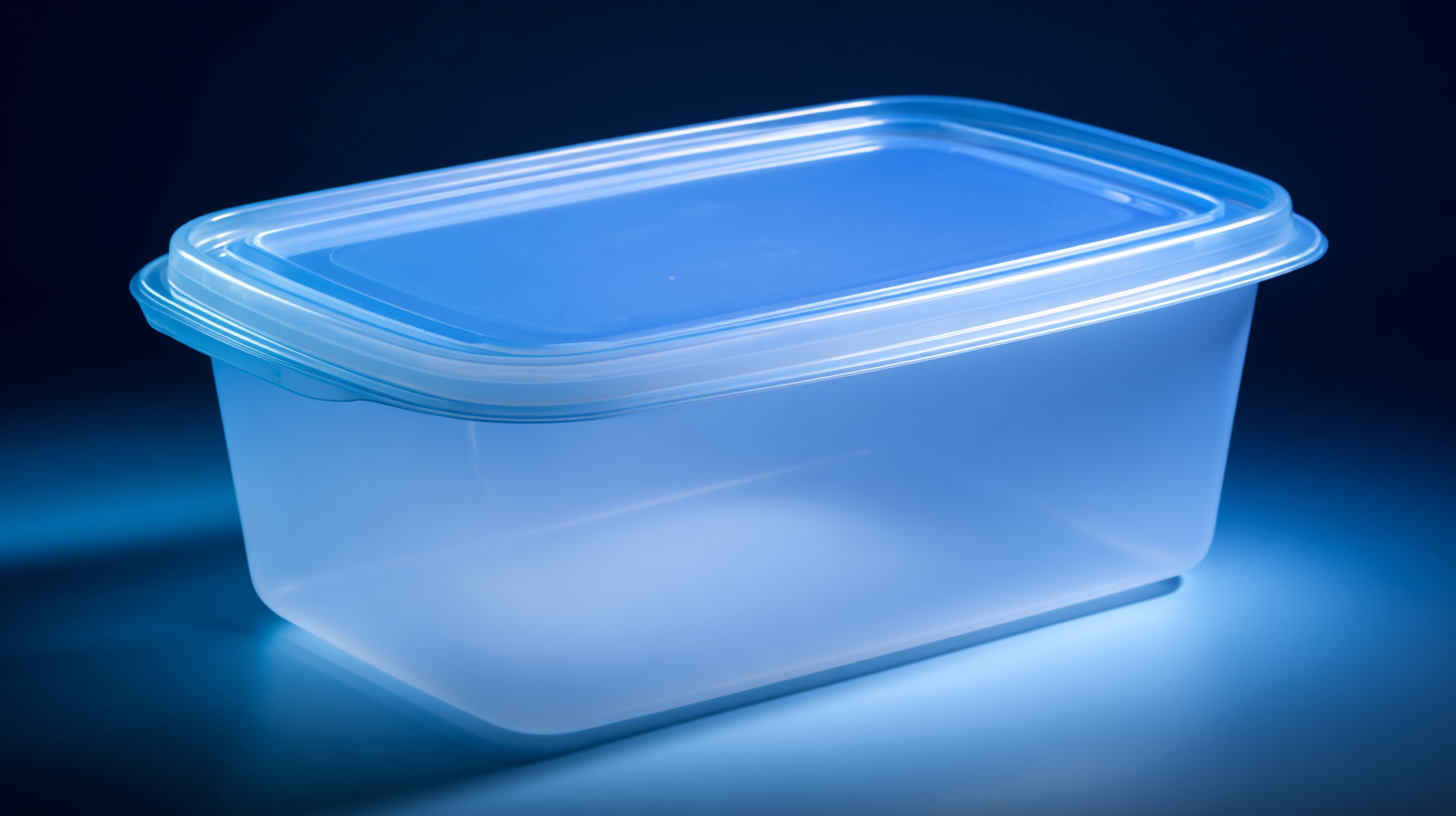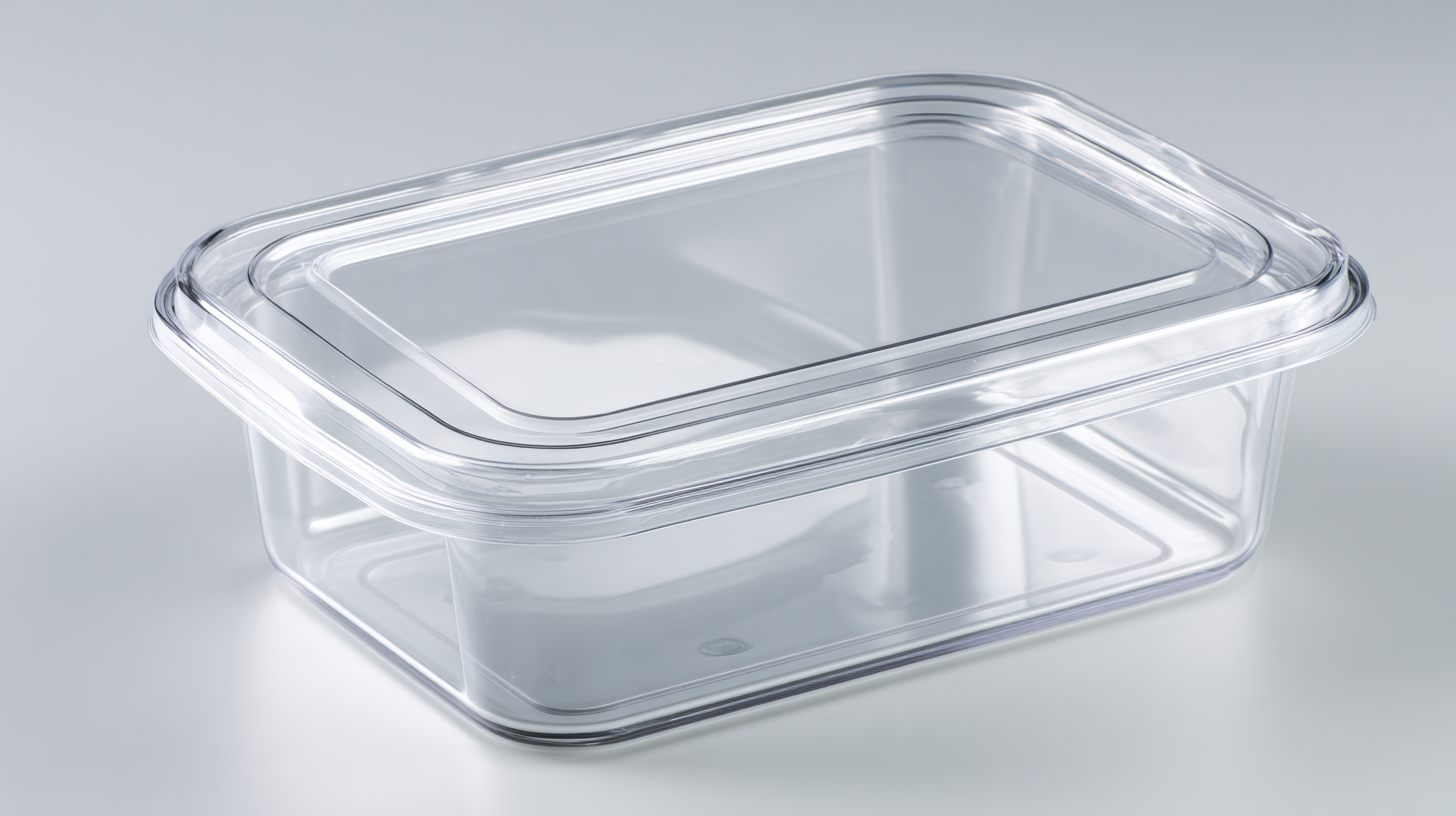
Understanding Technical Specifications For Best Food Grade Plastic Containers and How to Choose the Right One
The use of Food Grade Plastic Containers has surged in recent years, as the food industry increasingly prioritizes hygiene and safety in packaging. According to a report by MarketsandMarkets, the global food packaging market is projected to reach $500 billion by 2024, with plastic containers constituting a significant share due to their versatility and protective qualities. Food Grade Plastic Containers are specifically designed to meet rigorous safety standards, ensuring that they do not leach harmful chemicals into food products. Furthermore, the demand for sustainable packaging solutions is compounding the importance of understanding technical specifications, as consumers become more environmentally conscious. This blog will explore the benefits of various types of Food Grade Plastic Containers and provide guidance on selecting the most suitable options for diverse food storage needs.

Benefits of After-Sales Service in Food Grade Plastic Containers: A Key to Customer Satisfaction
After-sales service plays a crucial role in the satisfaction of customers purchasing food-grade plastic containers. According to a report by Grand View Research, the global food packaging market is projected to reach $600 billion by 2026, with plastic containers accounting for a significant share. With such a large market, the effectiveness of after-sales support can influence consumer loyalty and brand reputation, making it an essential component of the purchasing experience.

Prompt resolution of issues such as leaks or contamination can enhance customer trust. A survey conducted by Statista revealed that 70% of consumers consider the availability of customer support as a critical factor when selecting food storage solutions. Moreover, brands that engage with customers post-purchase have been shown to increase repeat purchase rates by up to 25%, further illustrating the importance of after-sales services. Offering guidance on proper usage and care of the containers ensures that customers derive maximum benefit from their purchases, solidifying their satisfaction and promoting positive word-of-mouth referrals.
Understanding Repair Costs: Analyzing Industry Data for Food Grade Plastic Products
When considering food grade plastic containers, understanding repair costs is crucial for businesses aiming to maintain budget efficiency while ensuring compliance with industry standards. According to a recent report by the Plastics Industry Association, the average repair cost for food grade plastic products can range from 5-10% of the initial purchase price, depending on the material quality and the frequency of use. This is significant, as companies must weigh the savings of buying cheaper alternatives against the potential high costs of maintenance and repairs.
Furthermore, understanding the durability of various food grade plastics can provide insight into long-term costs. The Food and Drug Administration (FDA) outlines that materials such as Polyethylene Terephthalate (PET) and High-Density Polyethylene (HDPE) not only meet safety standards but also exhibit lower wear and tear rates, which can lead to reduced repair needs. In fact, it has been estimated that opting for higher-quality materials can decrease repair incidents by up to 30%, translating into significant cost savings over time. Therefore, businesses must carefully analyze both initial investments and potential repair costs to make informed decisions about their food grade plastic container selections.
Understanding Repair Costs for Food Grade Plastic Containers
Choosing the Right Food Grade Plastic: Tips for Evaluating Technical Specifications
When selecting food grade plastic containers, understanding technical specifications is crucial to ensure safety and compliance. When evaluating these specifications, look for information on the type of plastic used—commonly polyethylene (PE), polypropylene (PP), and polycarbonate (PC). According to a report by the Plastic Industry Association, approximately 30% of all food packaging uses rigid plastic materials, emphasizing the importance of choosing the right type for your needs.
Additionally, pay close attention to certifications such as FDA approval and food safety standards set by organizations like the European Food Safety Authority (EFSA). These certifications indicate that the materials are safe for food contact and won't leach harmful chemicals. A recent study published in the Journal of Food Protection highlighted that containers meeting these standards significantly reduce the risk of contamination, thus safeguarding the quality of food products. Assess the temperature resistance ratings as well; materials designed to withstand both freezing and high heat can impact their performance and durability in various food storage situations.
Understanding Technical Specifications For Best Food Grade Plastic Containers and How to Choose the Right One
| Specification | Description | Importance |
|---|---|---|
| Material Type | Types of plastic used (e.g., Polypropylene, Polyethylene) | Determines safety and usability with food products. |
| FDA Approval | Certification indicating materials are safe for food contact. | Ensures consumer safety and compliance with regulations. |
| Heat Resistance | Capacity to withstand high temperatures (e.g., microwave safe). | Critical for food storage and reheating applications. |
| BPA Free | Indicates the absence of Bisphenol A in the materials. | Important for health concerns related to endocrine disruption. |
| Durability | Resistance to cracking, bending, and wear over time. | Ensures long-term use and cost-effectiveness. |
| Chemical Resistance | Ability to withstand contact with various food acids and bases. | Prevents degradation of the container and food contamination. |
The Role of Material Safety Standards in Selecting Food Grade Containers
When selecting food grade containers, understanding material safety standards is crucial to ensure safe storage and transportation of food items. Food contact materials (FCMs) encompass all substances intended to come into contact with food, including various container types. These regulations are designed to protect consumers from contaminants that could pose health risks, ensuring that only safe materials are used.
In the process of choosing the right food grade container, it’s essential to verify that the materials used comply with safety standards set by regulatory authorities. For example, containers should be free from harmful chemicals and should not leach substances into the food. Emphasizing sustainable options can also enhance food safety; alternatives such as silicone bags and beeswax wraps are gaining popularity for their environmental benefits alongside their safety features. By prioritizing these standards, consumers can make informed choices while minimizing potential health risks associated with food storage and packaging.
Maximizing Longevity: Maintenance Tips for Common Food Grade Plastic Containers
When it comes to food grade plastic containers, proper maintenance is key to maximizing their longevity. First and foremost, it's essential to understand the cleaning protocols for these containers. Most food grade plastics are dishwasher-safe, but it's always wise to check the manufacturer's guidelines. For those that require hand-washing, use mild soap and warm water, avoiding abrasive scrubbing pads that can scratch the surface and lead to degradation over time.
Another crucial tip for maintaining food grade plastic containers is to store them correctly. Keep containers in a cool, dry place away from direct sunlight to prevent warping and degradation. Additionally, always ensure that the lids are properly sealed to avoid contamination and preserve the freshness of the contents. By following these simple yet effective maintenance practices, you can significantly extend the lifespan of your food grade plastic containers and ensure they remain safe and reliable for food storage.

